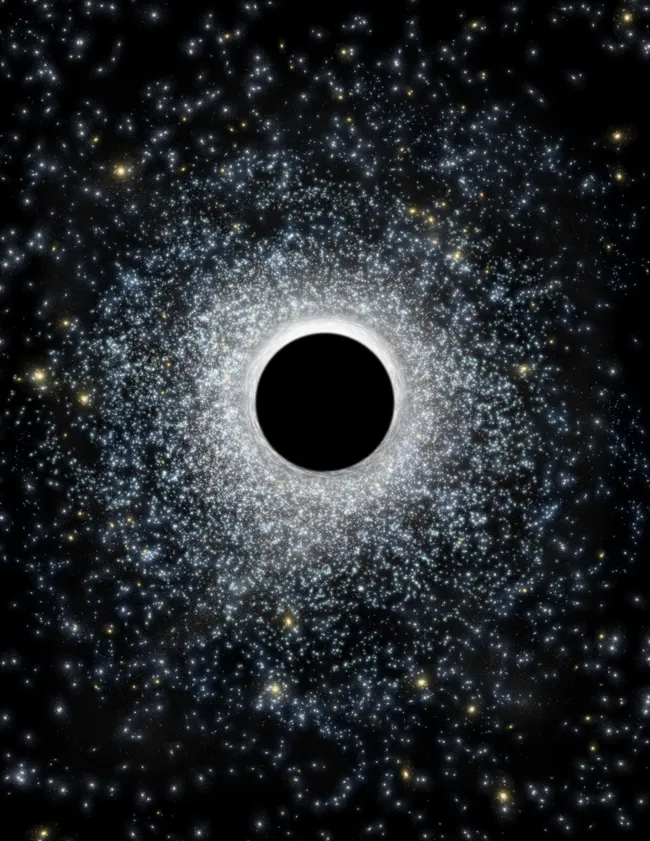
CfA / M. Weiss
About
Description of the project for general public

Black holes are dense regions of space where the gravitational pull is so strong that not even light can escape from it. Black holes with masses between 10 to 50 times the mass of the Sun are expected to form when massive stars die. Additionally, supermassive black holes with masses that are larger than a million times the mass of the Sun have been observed in the center of many galaxies including the Milky Way.
In some galaxies, these massive black holes shine brightly as they actively grow by accreting gas around them and their presence plays an important role in the evolution of their host galaxy. The origin of these very massive black holes remains an unresolved puzzle in astrophysics. The main aim of this project is to understand how stellar-mass black holes of a few 10 times the mass of the Sun can potentially grow inside dense star clusters and become seeds for supermassive black holes.
Since 2015, more than 80 merging black holes have been detected by the ground-based LIGO/Virgo gravitational wave detectors. Gravitational waves are ripples in the fabric of spacetime that propagate at the speed of light. Black holes in very tight binary systems emit gravitational waves as they orbit around one another. The loss of energy due to gravitational wave emission in such binary systems leads to the merger of these inspiralling black holes. In 2020, the LIGO/Virgo collaboration announced the discovery of a merger between two black holes that had masses which were 85 and 66 times the mass of the Sun resulting in the formation of a black hole which has a mass that is about 142 times the mass of the Sun. Energy equivalent to 9 times the mass of the Sun was radiated as energy in the form of gravitational waves from this merger. Black holes of these masses had not been observed before and theoretical predictions show that they are difficult to form through the isolated binary evolution of two massive stars. It is possible that these black holes may have formed through dynamical interactions in dense stellar clusters containing up to millions of stars.
A significant fraction of stars are born in stellar clusters where stars are closely packed together. In some of the clusters, the density of stars can be up to a million times higher than the density of stars in the solar neighbourhood, During the early evolution of such clusters, the most massive stars evolve to form black holes that then tend to segregate and sink to the dense central regions of the cluster where they can interact with each other and form binary systems which may merge due to gravitational wave radiation. Additionally, gravitational encounters between stars in the cluster can lead to the formation of black holes that are more massive (100 to 1000 times the mass of the Sun) than those predicted to form through isolated evolution of stars. The more specific aim of this project is to use computer simulations and theory to model the realistic evolution of stellar clusters in order to determine the pathways by which black holes can grow within them. We will simulate stellar clusters with different initial sizes and properties and then investigate how black holes are growing within them. We will also use these simulations to identify how the presence of these intermediate-mass black holes can influence surrounding stars and the observable properties of the stellar cluster. In addition, we will check how the presence of a massive black hole influences the production of merging lower-mass binary black holes that can be detected with current gravitational wave detectors.
Stellar clusters can sink and merge with the center of their host galaxies. Therefore, they can effectively deliver black holes of up to a few 1000 times the mass of the Sun to the center of a galaxy. These black holes may then grow in the center of the galaxy by accreting gas and merging with other black holes or stars leading to the formation of supermassive black holes that we observe at the center of galaxies today. This project also aims at investigating the role stellar clusters can play in delivering seeds of supermassive black holes to the center of their host galaxies.
